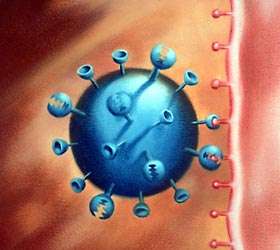Using biostatistics to detect disease outbreaks

An internationally recognised authority in biostatistics, Harvard University Professor Louise Ryan, is working with CSIRO researchers to help improve the way statistics are used to detect disease outbreaks in Australia.
A recipient of the Australia-Harvard Fellowship, Professor Ryan – the Chair of the Department of Biostatistics at the Harvard School of Public Health – arrived in Australia in June to work on a project developing statistical methods that could distinguish cases of the annual flu from reactions to a pollution event or food poisoning.
“We are at the point now where technology is enabling us to access huge amounts of data related to health, for example real-time information on hospital admissions, including symptoms and locations,” Professor Ryan says. “Developing the statistical and computational tools to sort through these data and detect patterns is a real challenge.”
The leader the Health Data and Information research group within CSIRO's Preventative Health National Research Flagship, Dr Christine O'Keefe, says Professor Ryan's visit will help CSIRO to improve the standard of information being generated from health data in Australia.
"Professor Ryan's visit will help CSIRO achieve its aim of generating better information from health data, contributing to improved health outcomes for Australians," Dr O'Keefe says.
Professor Ryan will be contributing to the development of a model of what the ‘usual’ behaviour of a disease occurrence would be.
“Using statistics, we are able to predict what the usual behaviour of something like winter flu would be, and then to understand the variations on normal behaviour that are likely,” Professor Ryan says.
“Its important to understand that within the definition of what is normal for something like the flu, there is still huge variation between the time of the year that it can occur, the severity of the symptoms and even the mortality rate.”
This means that statisticians will be able to provide the best possible advice to decision-makers so they can make decisions about how to allocate resources.
“Effective surveillance methods require finding the right balance between declaring an unusual event where there is none, versus missing an outbreak that is occurring. We need to develop methods of detection that will have high sensitivity to important signals but that also do not give us too many false positives, which can lead to a waste of resources,” Professor Ryan says.
Surveillance methods have the potential for many areas of application in addition to health, for example, traffic accident monitoring and water quality monitoring.
The Australia-Harvard Fellowship is awarded by the Harvard Club of Australia Foundation to support learned exchange between Harvard University and Australia through collaboration with senior Australian research organisations.
Professor Ryan will address an international workshop on spatio-temporal modelling in Sydney on 29 July.
Provided by CSIRO




















